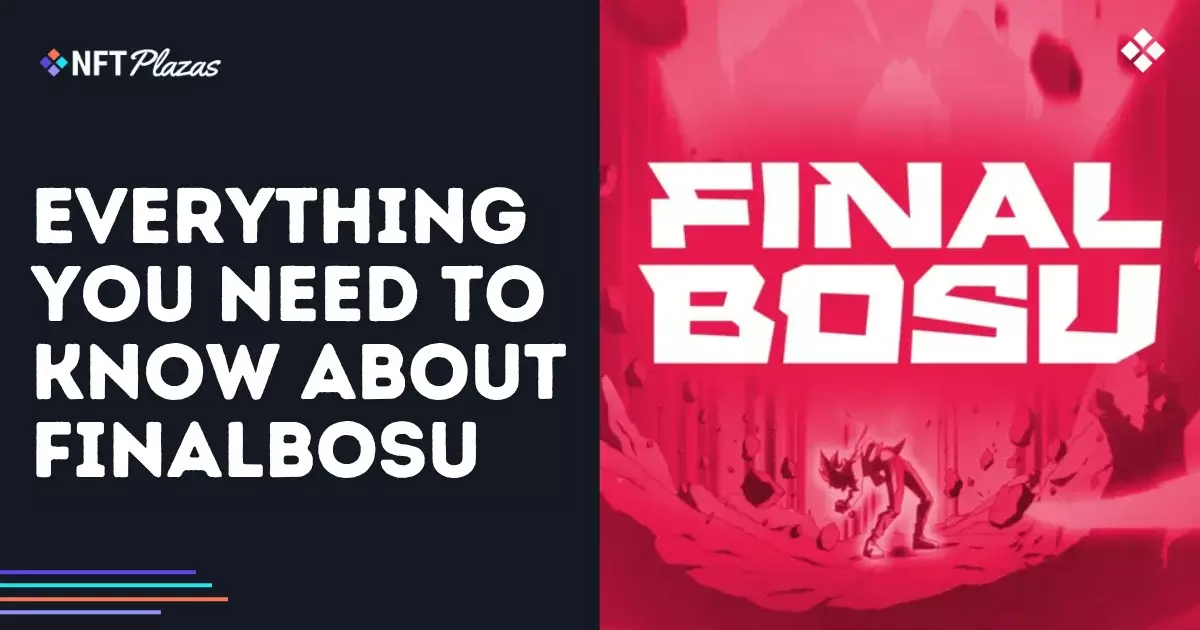In recent years, the booming NFT industry has positioned itself as a revolutionary force within the digital entertainment landscape. Projects like Finalbosu promise more than mere ownership—they claim to foster active participation in a burgeoning anime universe, where fans aren’t just spectators but co-creators. However, this seductive narrative masks profound vulnerabilities. The idea that owning an NFT can translate into meaningful influence on an intellectual property remains an alluring but often superficial promise. Behind the shiny façade of community-driven storytelling lies an intricate web of economic, technological, and cultural risks that skeptical observers should scrutinize critically. The optimistic veneer that Finalbosu and similar projects project is, at best, a carefully curated narrative designed to sustain investor enthusiasm and community engagement, but underneath lurk questions about longevity, sustainability, and real monetary value.
Ambitious Visions vs. Practical Realities
Finalbosu’s aspiration to evolve into a multimedia franchise, complete with games, animation, and a metaverse, echoes the ambitions of major entertainment conglomerates. Yet, the reality of translating a web3 NFT project into a fully operational, revenue-generating IP remains daunting. The transition from digital collectibles to animated series or playable games is fraught with challenges. Developing high-quality content in these domains demands enormous financial investment, technical expertise, and strategic planning that many NFT projects lack or underfund. Moreover, the current NFT ecosystem is historically volatile, characterized by rapid hype cycles, speculatory behavior, and fleeting communities that often dissipate once initial market enthusiasm wanes. The risk that Finalbosu’s assets and community support may not sustain long-term growth is significant, especially when considering that NFTs attached to a speculative asset class are inherently unstable.
Community and Ownership: Myth or Reality?
One of the most persuasive selling points of Finalbosu is its claim of empowering NFT holders to influence the universe’s lore and character evolution. Yet, in practice, what does ownership truly entail? Even with the promise of participating in storytelling and character development, decision-making authority for the project remains firmly in the hands of the creators. The community’s role is largely limited to curation, speculation, and secondary market activity rather than genuine governance. This raises fundamental questions about the decentralization myth that many NFT projects promote. Are holders genuinely stakeholders, or are they just passive consumers and investors tethered to the whims of a centralized development team? This distinction is crucial because overestimating community influence without clear, binding mechanisms risks fostering disenchantment and eventual disengagement.
The Economics of NFTs in the Anime Universe
The initial sale of Finalbosu’s NFTs on Ethereum and later on Abstract Chain exemplifies the typical hype-driven expansion. The immediate sell-out of the public collection underscores strong speculative interest, yet it does not guarantee sustainable value. The NFT market has repeatedly demonstrated a tendency toward fleeting valuations, with many assets losing significant value after the initial hype subsides. The second collection’s large minting—8,888 NFTs—at a price of $220 each, coupled with the reliance on secondary sales, increases the risk of market saturation. Furthermore, the actual use of the NFTs in future projects—such as games or the metaverse—is hypothetical at best. Without clear utility or guaranteed demand beyond speculation, the economic foundation of these assets remains fragile. Investors should question whether Finalbosu’s digital collectibles will retain or grow in value or simply succumb to market downturns.
Long-Term Sustainability and Strategic Risks
The vision to become the “largest fan-powered franchise” sounds inspiring, but ambitious plans often clash with real-world limitations. Translating a community-supported NFT project into a globally recognized entertainment franchise involves navigating legal, commercial, and creative hurdles. The absence of a published roadmap signifies a lack of transparent strategic planning, which can erode trust over time. Success depends heavily on the team’s ability to consistently deliver high-quality content, manage community expectations, and adapt to a swiftly changing digital landscape. The investment in such projects is inherently speculative, relying on continuous innovation and market appetite—variables outside the project’s control. If Finalbosu fails to meet its promises or faces unforeseen technical or financial setbacks, the entire ecosystem risks collapsing, leaving early backers with write-offs rather than accomplishments.
Is a Center-Right Approach the Solution?
From a center-right, liberal-leaning perspective, skepticism is warranted but not outright dismissal. Supporting innovation and community involvement is vital for cultural and technological progress, yet it must be tempered with prudence. Projects like Finalbosu exemplify the potential for decentralized creativity to challenge traditional entertainment models, but they must also accept their limitations. The best path forward combines visionary ambition with rigorous risk management: ensuring transparency, establishing clear utility, and maintaining financial discipline. Balancing the desire for cultural disruption with a realistic understanding of industry dynamics is essential. Without this, even the most promising NFT-driven anime ideas risk becoming yet another bubble in the unpredictable landscape of digital assets.
—
Note: This article critically examines the inherent challenges and pitfalls of rapidly expanding NFT projects like Finalbosu, with an emphasis on skepticism rooted in economic instability, community engagement limitations, and technological hurdles. While it recognizes the innovative spirit behind the venture, it advocates for cautious optimism and realistic expectations aligned with a pragmatic, center-right perspective.

